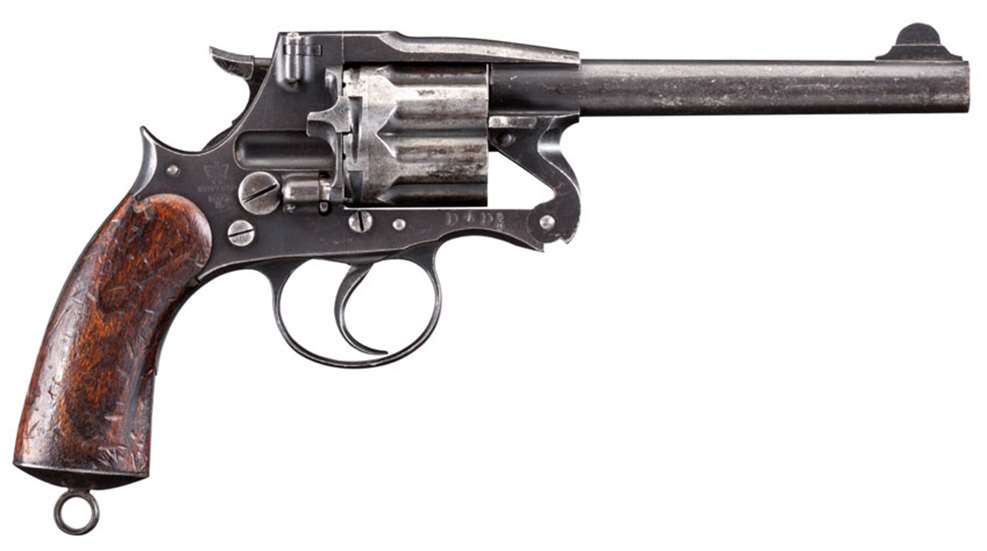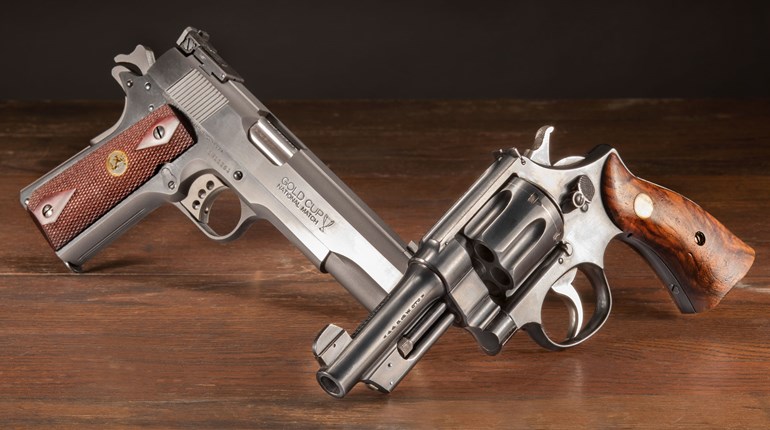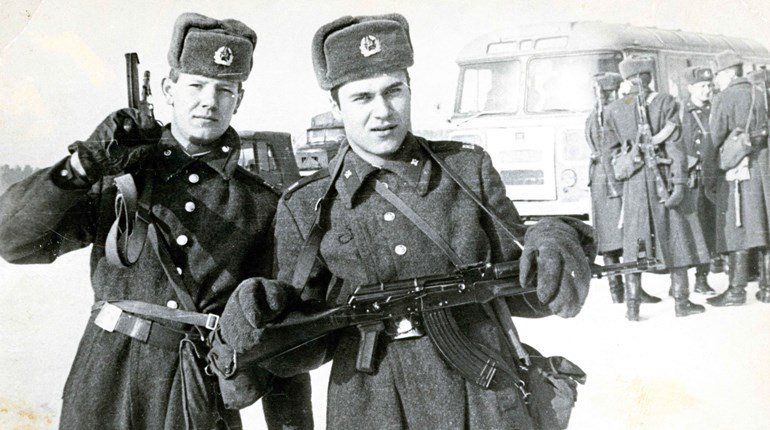
When we think of the evolution of the modern revolver, we typically think of highlights like the Peacemaker, the Registered Magnum or the Python. While those examples represent some of the most-important chapters in the larger story of the development toward the modern revolvers that surround us today, they sometimes tend to overshadow a developmental timeline punctuated by many lesser, but noteworthy, designs.
Particularly, four decades passed between the Colt 1851 Navy Revolver and the Colt New Army Model—four decades that progressed the state of the art from single-action cap-and-ball to double-action metallic cartridge with a swing-out cylinder and simultaneous extraction. That evolutionary hurdle wasn’t cleared in one stroke, though. It took several models to move the design anatomy toward that end, and one of those models did so with an awkwardness that is certainly worthy of note.
In 1880, the government-owned Royal Small Arms Factory at Enfield Lock north of London began producing a six-shot revolver incorporating a unique extraction/ejection system patented by an American engineer named Owen Jones. In this system, as the shooter opened the break-top hinge and swung the barrel downward and away from the frame, the cylinder was driven forward, extracting the cartridges. While this provided simultaneous extraction, which was a technical innovation on the cutting edge at the time, the Enfield revolver still loaded one round at a time through a loading gate on the right side of the frame like a Single Action Army revolver.

By today’s standards, the extraction system used by the Enfield revolver might seem bulky and awkward, but in 1880 it was advanced. At the same time, the Germans were using the M1879 Reichsrevolver: a gate-loading, single-action-only design that required the operator to remove each spent cartridge case by hand, one after the other. Thus, the British had a revolver that could load faster, shoot faster and unload faster than what the Germans were using.
Soon after the Enfield revolver entered service, though, the design began changing. It was found that the gun was not drop safe, so the Royal Small Arms Factory added a hammer safety. Enfield also corrected the fact that the revolver’s cylinder could rotate freely even when the loading gate was closed. A minor modification of the front sight and the elimination of grip checkering are also changes that, after 1882, indicate the difference between the Mark I and the Mark II. Finally, the Mark II also introduced a new caliber: the .476 Enfield, a cartridge capable of accelerating a 265-grain bullet to a muzzle velocity of just 600 fps.

In addition to being a little on the weak side, the Enfield revolver is awkwardly large with an overall length of 11.5 inches, and somewhat heavy, with a weight in excess of 2 pounds. Because of its dimensionally clumsy qualities, the Enfield revolver (in both the Mk. I and Mk. II variants) did not serve the British military very long. By 1887, a rival had emerged in the form of the .455-caliber Webley revolver, and by 1889 production of the Enfield revolver had ended. Despite the fact that it was the first revolver adopted by the British that was both designed and manufactured at Enfield, it had served the British for less than 10 years. Where it did achieve some longevity, though, was—in all places—North America.
In 1882, Canada’s North-West Mounted Police (NWMP) purchased 200 Mk. II Enfield revolvers and put them to work the following year. Those guns remained in inventory until 1911, providing almost 30 years of service that constituted the high-water mark of the Enfield revolver’s contribution to the history of small arms. While it has traditionally been overshadowed by the likes of the Peacemaker, the Registered Magnum and the Python, that contribution is nevertheless one that moved the design of the modern revolver out of the Victorian era and into the 20th century.






































